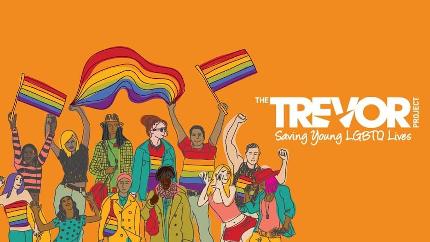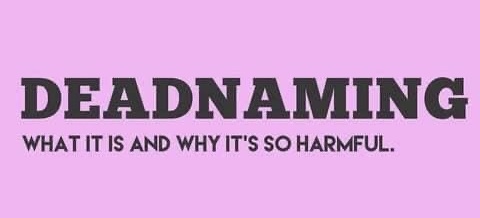The Trevor Project’s third annual National Survey on LGBTQ Youth Mental Health emphasizes the need for greater investment in mental health care and intersectional policy solutions to confront the public health crisis of suicide.
On May 19th The Trevor Project, the world’s largest suicide prevention and crisis intervention organization for lesbian, gay, bisexual, transgender, queer & questioning (LGBTQ) young people, released the findings of its 2021 National Survey on LGBTQ Youth Mental Health, representing the experiences of nearly 35,000 LGBTQ youth (ages 13-24) across the United States.
It’s estimated that 42% of LGBTQ youth, including more than half of transgender and nonbinary youth, seriously considered attempting suicide in the past year. Yet, nearly half could not access the mental health care they desired.
The 2021 survey performed by The Trevor Project on LGBTQ youth mental health gives new research that underscores mental health disparities faced by diverse LGBTQ youth amid the COVID-19 pandemic and beyond.
More than 80% of LGBTQ youth stated that COVID-19 made their living situation more stressful — and only 1 in 3 LGBTQ youth found their home to be LGBTQ-affirming.
Among LGBTQ respondents, 12% of white youth attempted suicide compared to 31% of Native/Indigenous youth, 21% of Black youth, 21% of multiracial youth, 18% of Latinx youth, and 12% of Asian/Pacific Islander youth.
Transgender and nonbinary youth attempt suicide less when respect is given to their pronouns and they are allowed to officially change their legal documents.
An overwhelming majority of LGBTQ youth also reported recent symptoms of generalized anxiety disorder or major depressive disorder, yet nearly half of respondents reported wanting mental health care in the past year but were not able to get it.
With 45% of respondents being LGBTQ youth of color and 38% being transgender or nonbinary, this survey provides critical insights into suicide risk factors, the impacts of the COVID-19 pandemic, mental health care disparities, discrimination, food insecurity, and conversion therapy. In addition to highlighting these serious challenges, the data underscores the importance of LGBTQ-affirming spaces and practices.
The study also speaks to the potential impacts of current events, with 94% of LGBTQ youth reporting that recent politics negatively impacted their mental health and 70% stating that their mental health was “poor” most of the time or always during COVID-19. Half of all LGBTQ youth of color reported discrimination based on their race/ethnicity in the past year, including 67% of Black LGBTQ youth and 60% of Asian/Pacific Islander LGBTQ youth.

“The past year has been incredibly difficult for so many LGBTQ young people because of multiple crises, from the COVID-19 pandemic to the hostile political climate and repeated acts of racist and transphobic violence. This data makes clear that LGBTQ youth face unique mental health challenges and continue to experience disparities in access to affirming care, family rejection, and discrimination,” said Amit Paley, CEO & Executive Director, The Trevor Project.
“We are proud that this survey sample is our most diverse yet, with 45% being LGBTQ youth of color and 38% being transgender or nonbinary. The data speaks to the wide variety of experiences and identities held by LGBTQ youth across the country, and emphasizes the need for comprehensive, intersectional policy solutions to confront systemic barriers and end suicide.”
Across The Trevor Project’s 24/7 crisis services platforms, LGBTQ youth have expressed a wide range of struggles over the last year in response to the COVID-19 pandemic. This study reveals that more than 80% of LGBTQ youth stated that COVID-19 made their living situation more stressful, and only 1 in 3 youth found their home to be LGBTQ-affirming. Further, nearly 40% of LGBTQ youth who had a job reported that they lost it during the pandemic. And 30% of LGBTQ youth reported having trouble affording enough food in the past month, including half of all Native/Indigenous LGBTQ youth and more than 1 in 3 Black and Latinx LGBTQ youth. Historically, both unemployment and food insecurity have been consistent risk factors for suicide.
“The Trevor Project is the largest suicide prevention organization for LGBTQ youth, but even we do not know how many LGBTQ youth die by suicide each year because that data is simply not collected systematically. This third annual survey aims to fill the gaps in the limited research we do have on LGBTQ youth mental health and suicide risk as a means to raise public awareness and improve public health interventions,” said Dr. Amy Green, Vice President of Research, The Trevor Project. “These findings are extremely concerning as they highlight many distinct factors that contribute to LGBTQ youth suicide risk. But we encourage lawmakers, public health officials, and youth-serving organizations to focus on the protective factors illuminated in the data, which point to best practices on how to better support LGBTQ young people. Once again, we find that LGBTQ-affirming spaces and transgender-inclusive policies and practices are consistently associated with lower rates of attempting suicide.”
Survey results demonstrate that respecting transgender and nonbinary youth’s pronouns and allowing them to change their name and/or gender marker on legal documents are associated with lower rates of attempting suicide.
Paley added, “To all the lawmakers considering anti-transgender bills across the county — we urge you to take a hard look at this evidence and take time out of your day to actually meet with the transgender and nonbinary youth who would be harmed by your misguided proposals. Affirming a young person in their gender identity is strongly associated with lower suicide risk. That’s why we should be expanding systems of support and implementing more inclusive policies, not denying trans youth access to affirming spaces and care.”























